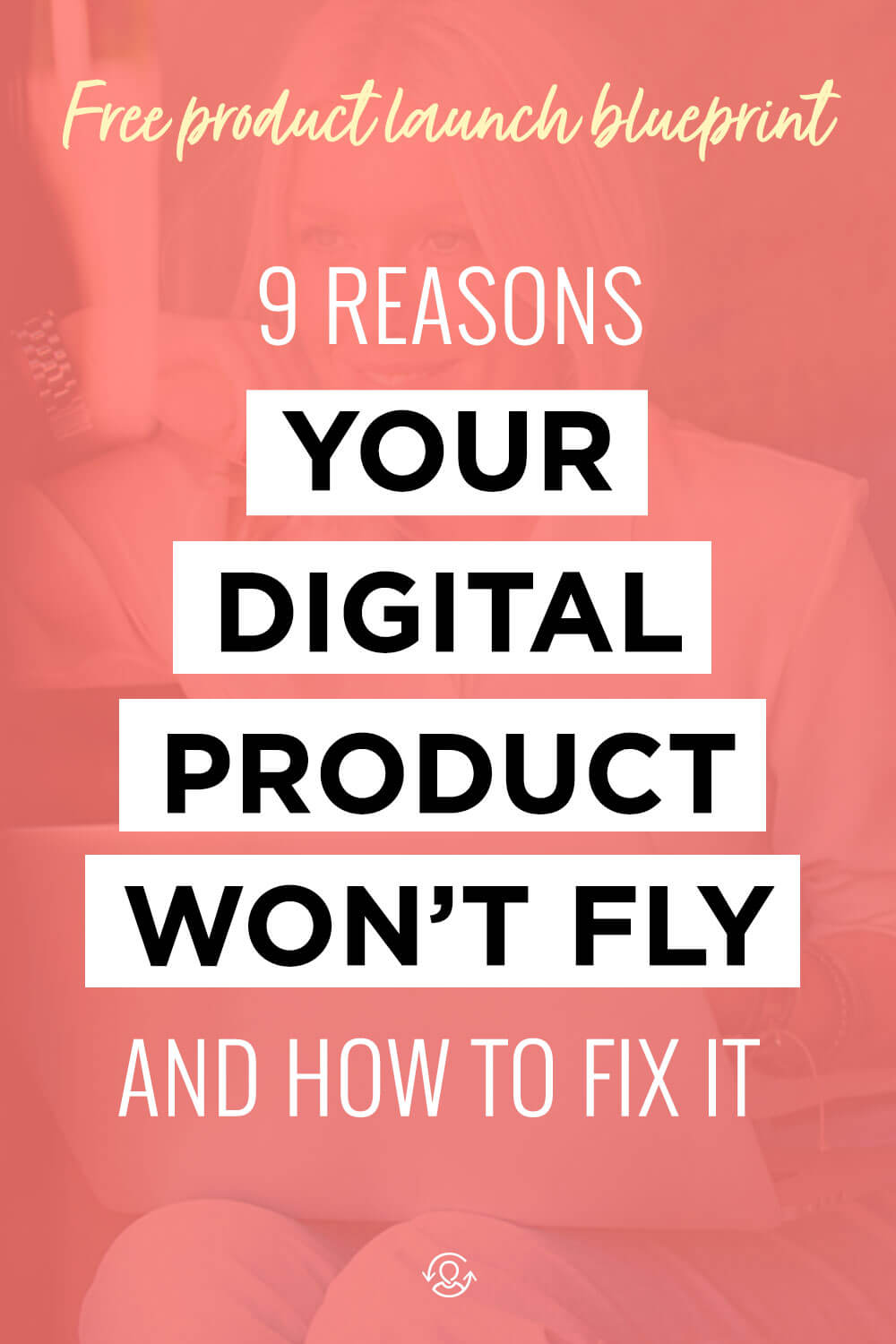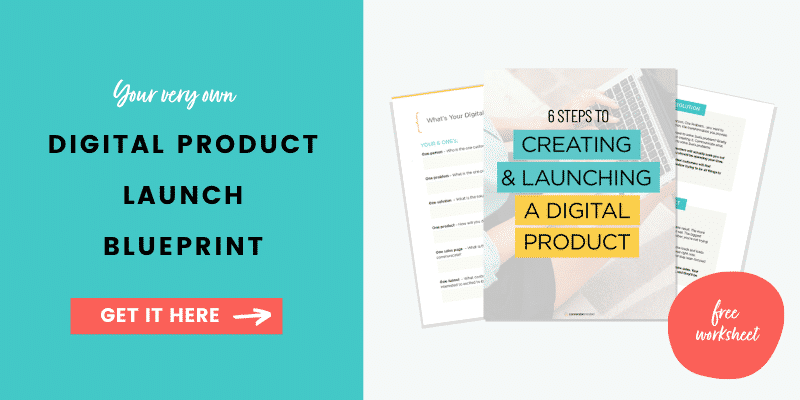
So, you have an idea for a digital product — something you know people need in their lives. And you’re the type of person who’ll really bring the value to make sure it’s the best possible product it can be . . .
You dream of finally having a passive revenue stream you can depend on, limitless income potential, and the freedom to spend your time the way you want . . …
You know that with digital products, all these things are possible!
But there’s just one problem . . .
Having a brilliant product idea and a commitment to quality does not guarantee your product will sell.
In fact, you might even work your tail off to get it out there and then find yourself waking up to the sounds of crickets chirping.
(Followed by screams of frustration into your pillow.)
If you’ve created a digital product in the past but it didn’t fly off the shelf the way you expected, or if this is your first product and you’re terrified of putting a ton of time into something that may never pay off.… you’re definitely not alone.
We want to acknowledge right up front that it takes a lot of guts to even attempt to sell something you’ve created with your own skills and talents.
It’s easy to get emotionally invested and feel that your product is a reflection of YOU and even your worth. Naturally, if that product doesn’t sell it can be a real gut-punch to the old ego.
But the truth is, the world is filled with incredibly valuable, high-quality digital products created by brilliant people that never sell the way they deserve to.
We created this guide as a way to help you avoid the most common mistakes that can make the difference between waking up to sales in your inbox (ca-ching!) and those darn crickets.
Let’s dive in!
Mistake #1: Lack of Research
Coming up with a great idea for a product is no doubt the hardest part of the process. If you make it that far, naturally you want to just dive in and get started creating it!
But if you haven’t done your due diligence to make sure there’s demand in the market first, you’re taking a huge (unnecessary) risk that could result in you spending time, energy, and resources with nothing to show for it.
Unless you’re intimately familiar with your audience and know without a shadow of a doubt what they’ll open their wallets for, it’s crucial to find out before you get too far. Market research is an integral part of creating a product that actually sells.
It doesn’t need to be complicated or take up a ton of your time to do!
You can interview/survey your audience, research relevant keywords on Google and Pinterest, and look at marketplaces in your niche — what products are already selling?
Testimonials and reviews are a great place to get intel: What did they love/appreciate? What let them down? Where are the gaps? How can you do it better?
You can also analyze your most popular content to get ideas of the types of things your audience needs help with or experiment with freebies to see what people raise their hands for.
Mistake #2: Not Nailing Your Niche
It’s instinctive to want to solve all the problems you’re capable of solving and sell your products to anybody who has money to spend, but when you try to be all things to all people,, you end up getting your signal through to nobody.
Think about it…
The internet is filled with noise and competition. We’re talking thousands of marketing messages daily! In order to cope and get through the day, your customers are filtering out MOST of them.
What do they pay attention to? Messages that are hyper-relevant to them and speak to their immediate desires and problems.
This requires narrowing down both the problem you solve and the people you solve that problem for so when they see your message, they’ll know it’s specifically meant for them (not everybody) and they know they need to buy it from you.
Niching down can be a painful part of the process because it usually means you have to give something up — either something you’re really good at or markets you love serving.
But when you get clear about your niche, everything gets exponentially easier — including creating marketing messages that get your dream customers to stop scrolling and pay attention!
And if it makes you feel better, it doesn’t need to be set in stone. You can always pivot if you need to as you learn more and gain clarity.
Speaking of marketing…
Mistake #3: Treating Marketing Like An Afterthought
It’s incredibly common for digital product creators to focus intensely on product creation and not give a single thought to how they’re going to market that product until after they’re finished . . .
“I’m finished . . . Ta Da! . . . now what?!”
The trick is to start thinking about how you’re going to market your product before you start creating it and be thinking about it throughout the process.
This will help you make decisions about what to call it, how to describe it, what features/ chapters/modules and bonuses to include, what formats your audience will prefer, and what types of related free content (e.g. blog posts, social media posts, webinars, lives, etc.) you can create to get people into your funnels.
One of the secrets to our process is that we start creating our sales page in the early stages of product creation and sometimes even before we begin. Sounds counterintuitive, but here’s why we do that . . .
By going through the process of writing the copy that describes our customer’s pain points and frustrations, articulating the transformation they want, and thinking through the ways we’re going to help them get there, we get crystal clear about “what it is” we need to create.
Oh and about sales pages…
Mistake #4: Weak Sales Page
Your sales page is where the sale is ultimately won or lost, but time and time again we see creators spending tons of time creating epic products and then throw together a quick sales page describing the nuts and bolts of what it is and calling it good . . .and sorry to say, that just ain’t gonna cut it.
The #1 reason why sales pages fail to convert is that when customers land on the page, they don’t understand immediately (we’re talking within seconds) why they need it or what makes it any different than other things they’ve seen or tried.
As a creator, you’re thinking about your product in one way, but usually your customers are thinking about it in another way. Creating a high-converting sales page means you must crawl inside the mind of your customer and join in on that conversation.
Said another way: move beyond what you want them to know and get to what they need to hear.
The decision to make a purchase is a predictable psychological process every customer goes through and a sales page’s job is to guide them through that process.
Conversion copywriters know this (that’s why they make the big bucks!) and they use proven copywriting formulas to make sure they hit on every psychological trigger customers need in order to feel confident hitting the “buy now” button.
The great thing about that is, these formulas are not top-secret! There’s no need for you to recreate the wheel when it comes to your sales page copy — just use a copywriting formula that’s already been tested. They’re easily found online and you can even grab our worksheet here.
But there’s a secret to sales copywriting that a formula can’t give you and that leads us to mistake #5…
If you’d like our support for your next launch, grab this free Digital Product Launch Blueprint. Click the image below to download so you can get started.

Mistake #5: Not Being Confident in Your Product
This is something that doesn’t get addressed nearly enough, but your mindset really is 99% of the battle when it comes to making and selling digital products.
When you’re just getting started, it can feel terrifying to put yourself out there in a much bigger way than you’re used to with the goal of reaching as many people as possible to buy something you’ve created.
GULP.
Imposter syndrome, fear of criticism/failure/success/money, and perfectionism are all incredibly common for creators to experience and when left unchecked, lead to playing it small (or not putting it out there at all!).
Have confidence in your product because confidence sells. If you are not the most excited person in the room about your product, your customers will sense that in your marketing messages and sales copy.
If you don’t feel confident, you have our permission to fake it until you make it — try Imagining that you’re selling this product on behalf of somebody you really care about and want the best for.
Remember that the worst thing that can happen is you overpromise and underdeliver so much that somebody asks for a refund..
(Refund requests are something that happens to everyone, by the way.)
Let us be clear that we are not saying you should overpromise or underdeliver….
But keeping that in mind can be helpful because it’s EXPONENTIALLY more common to underpromise and undervalue your product in your messaging.
The way to make happy, repeat customers is to live up to the promises you make to them — no more, no less. That means not exaggerating the value and overhyping it, but it also means not undervaluing it too.
We have a saying around our virtual office: “blow up the value.” By that we mean to get into all the nooks and crannies of your product to shine a spotlight on every possible feature and benefit your customer can expect when they buy.
It’s not about exaggerating. It’s about remembering to tell your customers about the things you might take for granted they’ll just understand is included . . .
Think of it this way: your customers NEED as much information as you can give them to make an informed decision.
Mistake #6: Not Enough Paths to the Sale
What we see a lot is people launching their product, quietly announcing it, and when the sales don’t come immediately flooding in, they consider it a failure and give up.
Fear sets in, your ego freaks out, and you don’t want to venture any further outside of your comfort zone.
That’s the time to push through your mindset roadblocks, because “asking once” isn’t going to get the job done. Getting your product visible and guiding customers toward a purchasing decision is a process.
Here’s the thing: if you can sell it once, the rest is just a numbers game.
Keep in mind that MOST people who see your offer aren’t going to buy, especially if it’s the first time they’re hearing about it. A product that converts at 5% (which is good!) means that 95% of the people who landed on your sales page said “no” and clicked away.
When that happens, it just means it wasn’t for them, it wasn’t the right time, or their cat knocked over a lamp and they had to step away . . . there are a million reasons why and none of them are personal or a reflection of the value your product is capable of providing your customers.
Once your product is out there, remove your ego and think like a salesperson whose job it is to get enough people to view your offer. How are you going to do that? Think of some ways right now!
Now, think of some more ways.
Then, think of some more.
And don’t stop there! Keep looking for ways to get your product visible with the people who need it and are out there waiting for it.
Ads are the fastest and easiest way to get traffic to your sales page, but starting with organic strategies is the safest bet while you test your market, offer, pricing, etc.
But with organic strategies, you’ll be spending more time and energy so be prepared, and be thinking in terms of creating MULTIPLE paths to your sales page . . .
Creating SEO content, queuing up promotional social media posts to run on a regular schedule, getting in front of other people’s audiences, creating affiliate relationships, building your email list, and setting up automated email sequences and scheduling special promotions are all examples of ways to build those pathways.
You don’t have to do them all and you certainly don’t need to do them all at once, but it’s important to be prepared that creating your product is just the tip of the iceberg It’s a HUGE accomplishment! But that’s when the real work begins.
The straight scoop is that “passive” income doesn’t mean you passively wait for money to show up in your bank account. It’s up to you to get the sales flowing.
When you have a product you know converts and is making a profit, and you’ve got a good grasp on your target market, then you want to crunch the numbers to see if it makes sense to start testing ads to scale your good results.. (We call this “pouring fuel on the fire.”)
Mistake #7: Not Looking At Your Numbers
Key takeaway: if your product isn’t flying off the shelf right off the bat, do NOT jump to the conclusion that nobody’s interested and move on to the next thing.
Instead, work to get enough traffic to your sales page so you can start collecting data and use that to inform your decisions going forward. How many people visited your sales page? What % of them purchased?
If your sales page is converting and you’re making a profit — even if your revenue is low to start — that means you need to keep going! (See #6)
Mistake #8. No Follow Up
They say “the money’s in the follow up” and that means wrapping your head around the fact that MANY of the people who said “no” on their first visit to your sales page are not saying “no” at all . . .
They’re saying “Huh! Maybe.” or “Yes! Just not right now…”
Sales funnels to the rescue!
A sales funnel, in the simplest of terms, just means you’re guiding people through the purchasing decision-making process and that can take time. Email is hands-down the most effective channel to stay visible and earn the trust of your “maybe someday” people.
Focus hard on building your email list because then, you can continue to nurture those relationships until the time is right for them to say “Heck yes, sign me up!”
Mistake #9: Creating A Product Rather Than An Offer
The final mistake we want to address is not creating an offer. If you click out of this document with just one takeaway make sure it’s this:
Your product is just ONE PIECE of your offer.
Make sure you’re including:
>> A clear description of the outcome or result they can expect when they purchase (not just “what it is” but how it’s going to transform their circumstances).
>> The reasons why they should purchase from YOU and not your competition. What makes this product unique? What makes you uniquely qualified to help them?
>> Urgency & scarcity: how are you going to get them to ACT NOW (not later)?
>> What bonuses will you include?
>> What special pricing options will you create to make it easy for them to say yes?
Be thinking about all of these things along the way as you create your digital product and make these details clear in your sales copy.
Conclusion
Making and selling digital products can be a joyful, rewarding, and incredibly profitable way to build your business (or just earn some extra cash). By following these tips, we hope you’ll be able to avoid some of the common pitfalls that can easily derail you on your journey.
If you’d like our support for your next launch, grab this free Digital Product Launch Blueprint. Click the image below to download so you can get started.


